NYC’s Forgotten ‘War on Christmas Trees’
Discover how an obscure holiday crackdown affects festive street vendors today!


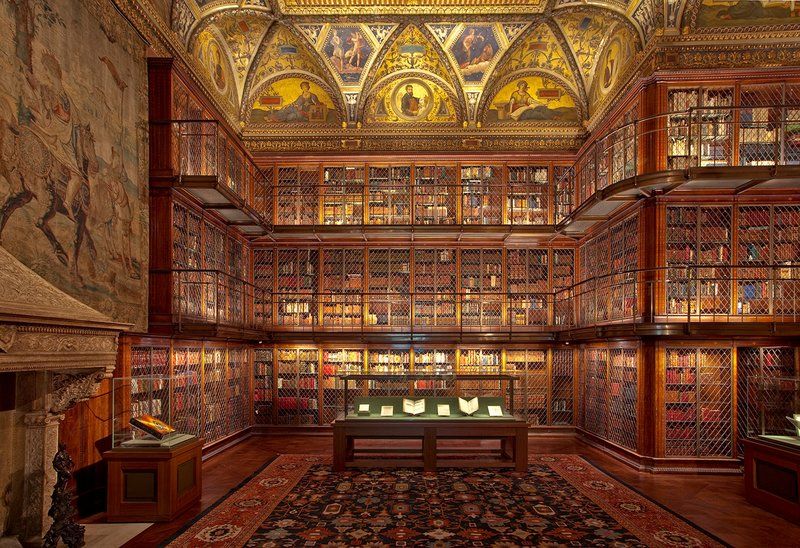
Photo courtesy of The Morgan Library & Museum
New York City libraries are renowned for their gorgeous architecture, vast collections of classical and contemporary works, and quiet study places amongst the hustle and bustle of the city beyond their doors. But which one came first? Many of these libraries weren’t originally built to be libraries but started life as old residences, courthouses, club gathering spaces, and even prisons that have been converted. New York City is home to an astounding 220 libraries in New York City, not even counting the multitude of private libraries.
These history-rich buildings are loaded with secrets in their walls – hidden histories that you could be sitting amongst without ever realizing.You could be reading archives from 1785 in the same spot as tradesmen were studying years ago at the General Society Library. Or perhaps studying in the former master bedroom of the opulent Rogers family at the New York Society Library. Maybe you are scanning books on the very shelf that is secretly a door leading to a spiral staircase at the Grolier Club!
Read on for the secret histories of ten of the oldest libraries in New York City!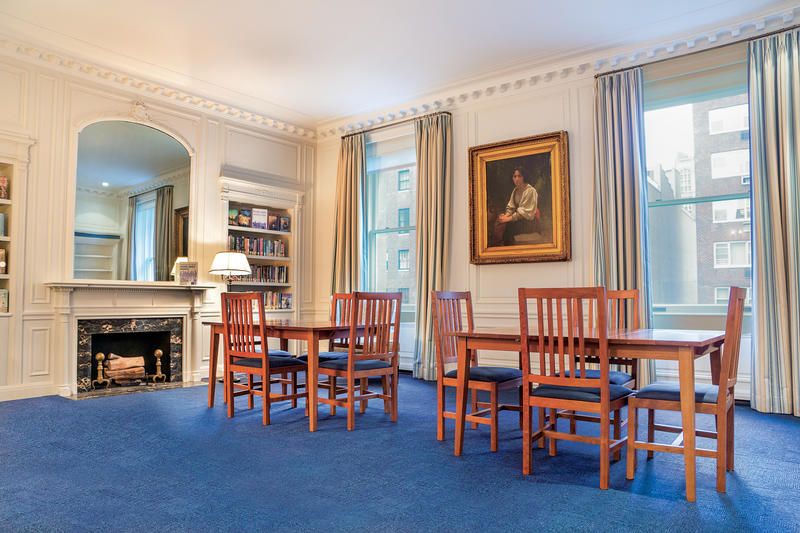
Photograph courtesy New York Society Library, The Whitridge Room
The New York Society Library was founded in 1754, turning 265 years old this month! It was actually the first library in New York City open to the public, originally built for the affluent Rogers family. The library was opened in a room in the old City Hall with a subscription system open to anyone. Until the founding of the public library system in 1895, The New York Society Library was referred to as “the City Library.” The library itself moved locations throughout the next few decades, following the book-lovers uptown until 1937, where it remains at its present location at 53 East 79th St.
It is believed that the Rogers family lived in the current building, a large landmakred Italianite townhouse constructed in 1917, up until 1935. Most of the reading rooms have since then been repurposed. For example, the Whitridge Room was the former master bedroom and the Hornblower room was the former maids’ rooms! Today, the library hosts many events for children, teenagers, and adults alike such as monthly writing groups and book clubs.
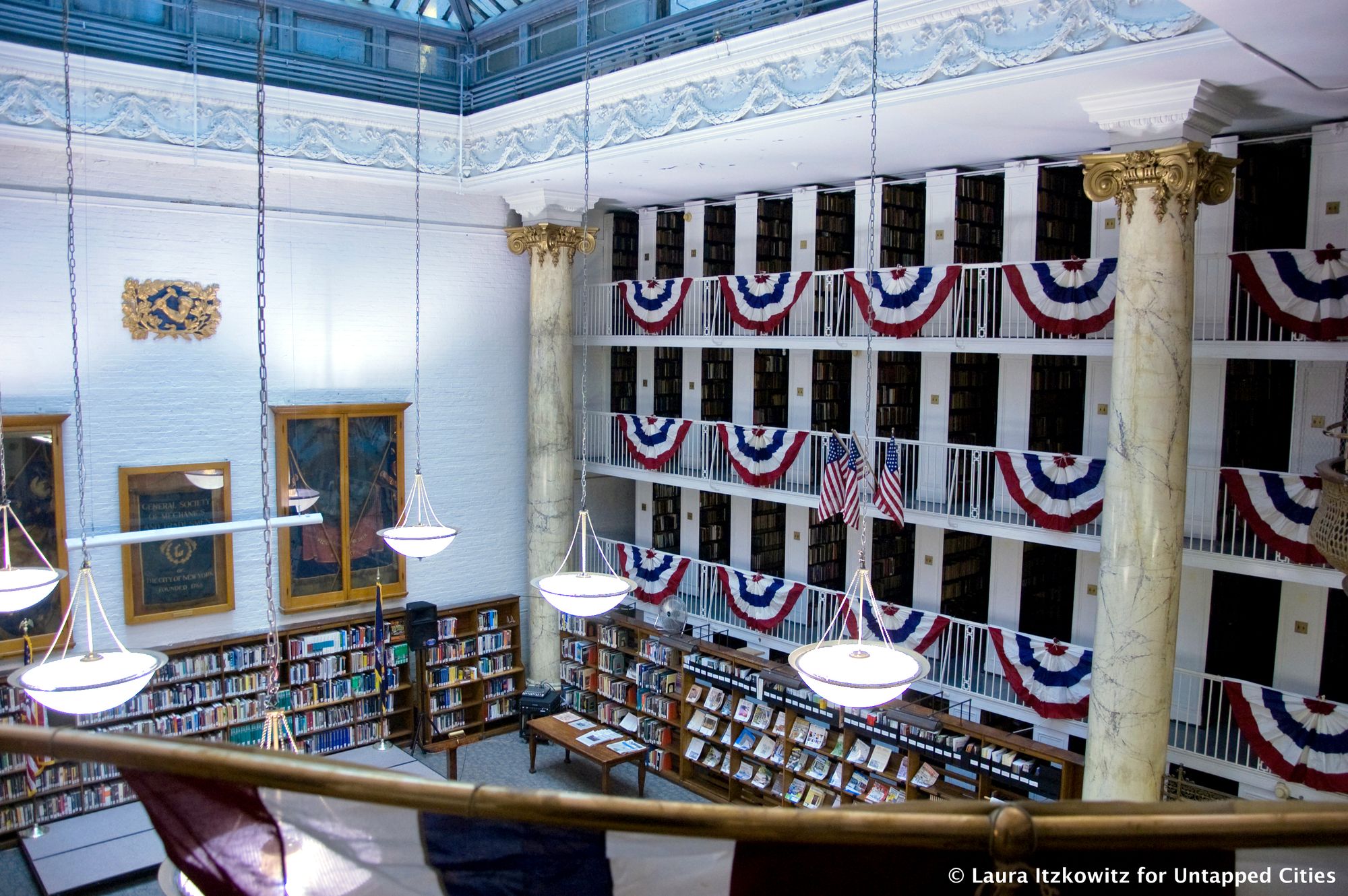
The Library of the General Society of Mechanics and Tradesmen was established in 1820. The General Society of Mechanics & Tradesmen of the City of New York is a 234-year-old organization founded by the skilled craftsmen of the city. Originally named the Apprentices’ Library, the library had become one of the largest free circulating libraries in New York City. The General Society converted its mechanics school to the Mechanics Institute in 1858. It is renowned for providing tuition-free instruction for trades-related education and is now the oldest privately-endowed, tuition-free, technical school in New York City.
This library contains an extensive collection of research materials, with archives dating back to 1785, such as the 176-year-old lecture series of the Labor, Literature and Landmarks, and Artisan Lecture Series. Unique to the General Society Library, is the John M. Mossman Lock Collection which consists of 370 locks and tools dating back to 4,000 BCE.
The Library of the General Society of Mechanics and Tradesmen is located on 20 West 44th Street and is open from 11 AM to 5 PM.
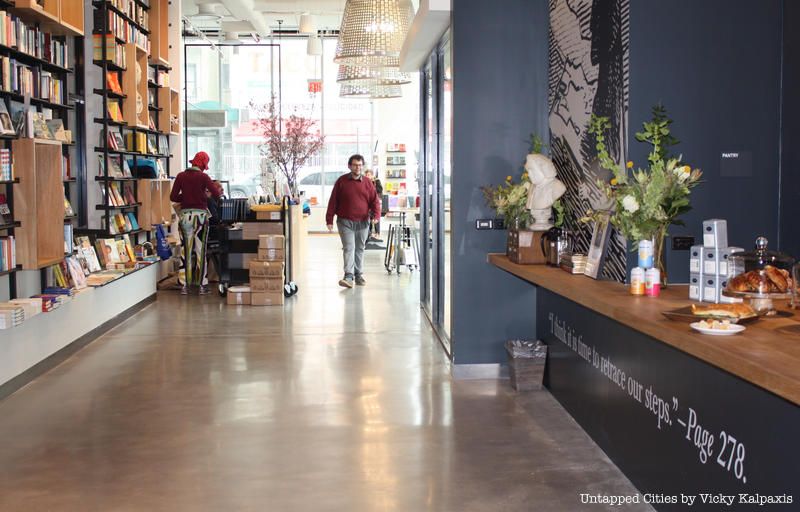
The Center for Fiction in downtown Brooklyn
The Mercantile Library was established in 1820 by founder William Wood. The initiative behind the founding of the library was to create a place for young men (mainly merchants’ clerks), to spend time rather than at bars or billiard rooms. By the early 1870s, The Mercantile Library, nicknamed “The Merc” had not only become the fourth largest library in the country, but also the largest lending library in the United States.
If The Mercantile Library doesn’t sound familiar, it’s probably because it is now the Center for Fiction and the whole organization made a move from Midtown Manhattan to Downtown Brooklyn just a few months ago. The Center for Fiction is the only establishment dedicated solely to the art of fiction and prides itself as being “a home for readers and writers”. The Center for Fiction differs from the Mercantile Library in that it offers many more services such as a writer’s studio, writing classes taught by authors, a café, and more! It also prizes authors each year with awards such as the “First Novel Prize”, which Tommy Orange won for his debut novel There There in 2018. The new center is
located at 15 Lafayette Avenue in downtown Brooklyn.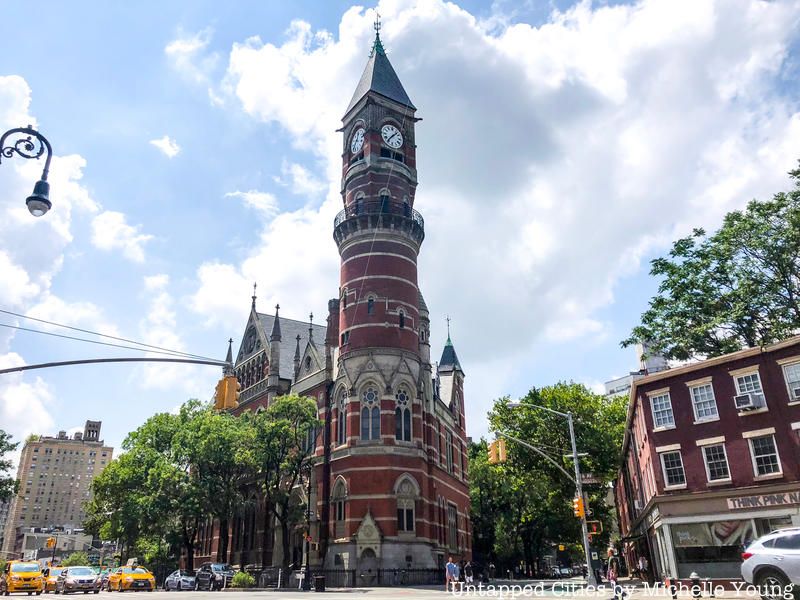
The Jefferson Market Library has had many past lives prior to its opening in 1967. The building was constructed between 1875-1877, by architects Frederick Clark Withers and Calvert Vaux in a Victorian Gothic style. The structure has hosted a courthouse, a police court, a holding room for prisoners, and a fire watcher’s balcony. In 1929, the courts were used solely for women and the prison as the Women’s House of Detention. Eventually by 1959, the building was abandoned and had been overrun by animals such as birds and rats. In an effort to save the building, Mayor Robert F. Wagner —‚ motivated by members of the Greenwich Village community — made the decision to preserve and convert the space into a public library, and thus, The Jefferson Market Library was born.
One of the most recognizable elements of the Jefferson Market Library is its clocktower,
which Untapped Cities Insiders have been able to climb and explore on several behind-the-scenes trips inside. Unfortunately, the library closed on April, 1 for approximately three months of renovation which will improve ADA accessibility, rehabilitate the lobby, upgrade several restrooms, and install a new elevator. Stay tuned for our next visit!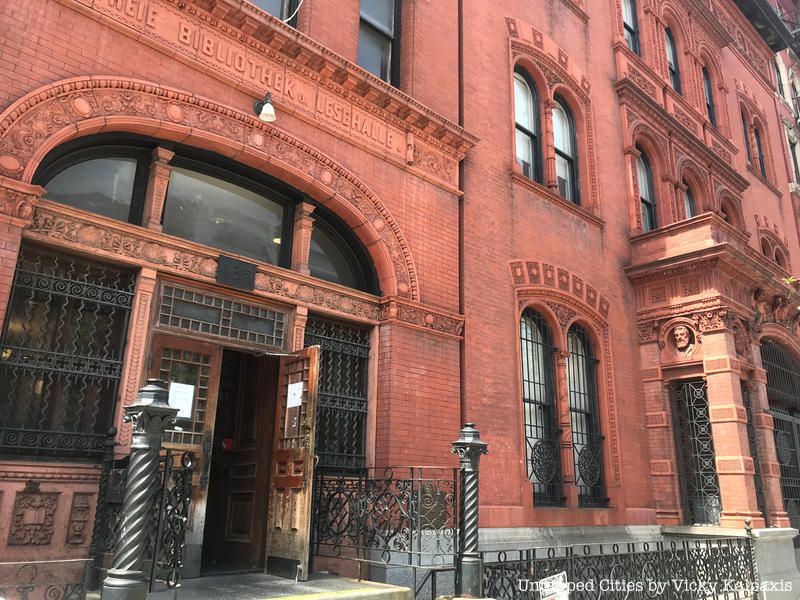
The Ottendorfer Library in the East Village is a branch of the New York Public Library and was founded in 1884 as New York City’s first free public library. The branch was a gift of Oswald Ottendorfer, the owner of the New-Yorker Staats-Zeitung newspaper. His intention in opening the library was to provide the German community in the area with books to assist in assimilating to American culture. Originally the library shelves held books in English and in German. The building was deigned by William Schickel, an architect from Germany, with neo-Italian Renaissance styles combined with Queen Anne architecture.
Similar to the original intentions of Oswald Ottendorfer, most of the events at the library are centered around learning English for speakers of other languages. Other events include book swaps, and technology classes for teens and adults. The building is located on 135 Second Avenue and is a designated New York City landmark.
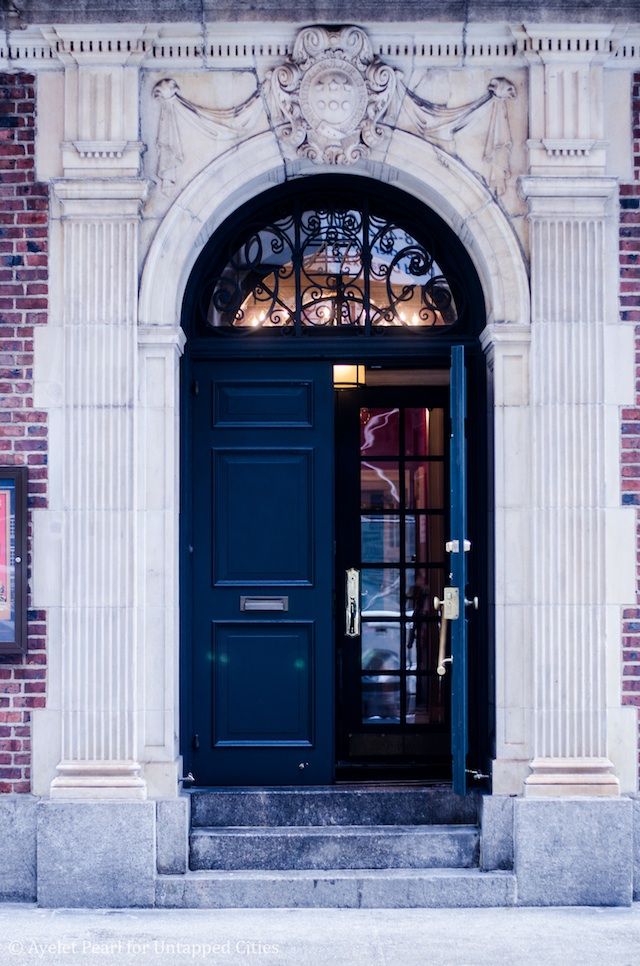
The Grolier Club was founded in 1884 by Robert Hoe, a printing press manufacturer and book collector, along with eight other of his fellow bibliophiles. The organization itself was named after Jean Grolier, the Treasurer-General of France and renowned French bibliophile. The nine men initiated the club to focus on the study, collection, and appreciation of books through publication and exhibitions open to the general public. The 100,000 volume collection of books in the library is devoted to bibliography and the “arts of the book.”
Today, the library is a great resource for scholars, researchers, and historians in book history as it hosts 60,000 volumes of book auction catalogues. Currently at the Second Floor Gallery Exhibition is “A Matter of Size: Miniature Bindings and Texts from the Collection of Patricia J. Pistner” from April 23 until May 18.
These exhibitions of books and prints have been free to the public since 1884. The Grolier Club Library is located on 47 East 60th Street, and only open to non-members by appointment for unique research related to the art of books. Next time you visit, see if you can find the secret bookcase door that swings out from the wall to reveal a spiral staircase leading to a mezzanine level!

The Stephen A. Schwarzman Building, often referred to as the “main branch” of the New York Public Libraries, was constructed in 1895. The first collection was formed through the consolidation of both the Astor and Lenox Libraries, and has since then evolved into one of the most comprehensive library collections across all occupations. Today, the Stephen A. Schwarzman Building hosts up to 15 million items including everything from medieval manuscripts to the latest novels. The library officially opened to the public in May 24, 1911 and was actually dedicated to the then-current President William Howard Taft the day prior. The building did not receive its current name until 2008 when Stephen A. Schwarzman donated $100 million dollars to the expansion of the New York Public Library.
Recently, Untapped Cities Insiders were treated to a special look into the New York Public Library’s collections and had chance to view the Rose Reading Room from atop the employee-only catwalk! Learn how you can join an upcoming tour here!
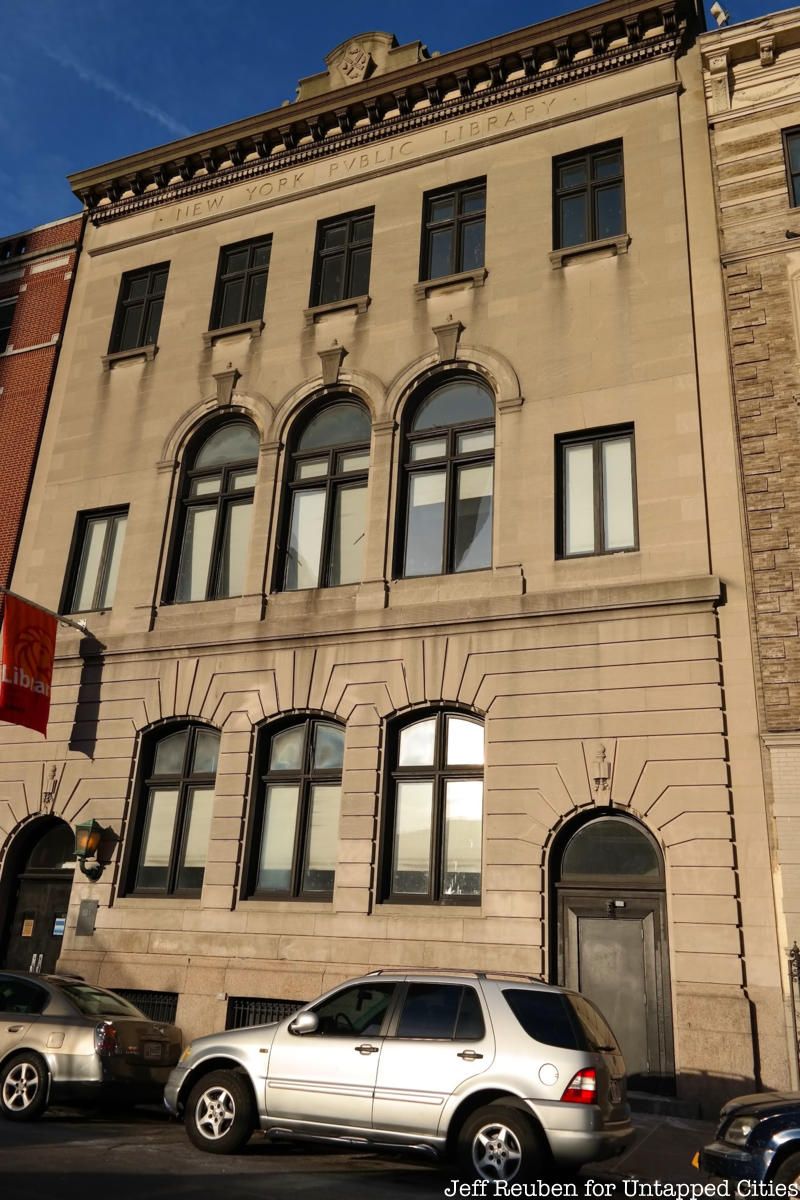
The Fort Washington Library is a branch of the New York Public Library. It opened on April 14, 1914, two blocks east of the George Washington Bridge. Similar to other branches of the New York Public Library, the construction of Fort Washington was funded by donations from Andrew Carnegie.
Authors such as Edwin Newman and Henry Kissinger discussed the impact thatFort Washington
Library had on their teenage years, heavily influencing them to read and write.Unique to the Fort Washington Library is the extensive collections in other languages such as Russian and Spanish and the classes provided for non-English speakers to learn English. A major, full branch renovation of the Fort Washington Library is projected to be completed by November 1, 2022 that will address ADA compliance issues, construct an elevator, and other architectural needs. Today, the library is located at 535 West 179th Street and open to all visitors and scholars!
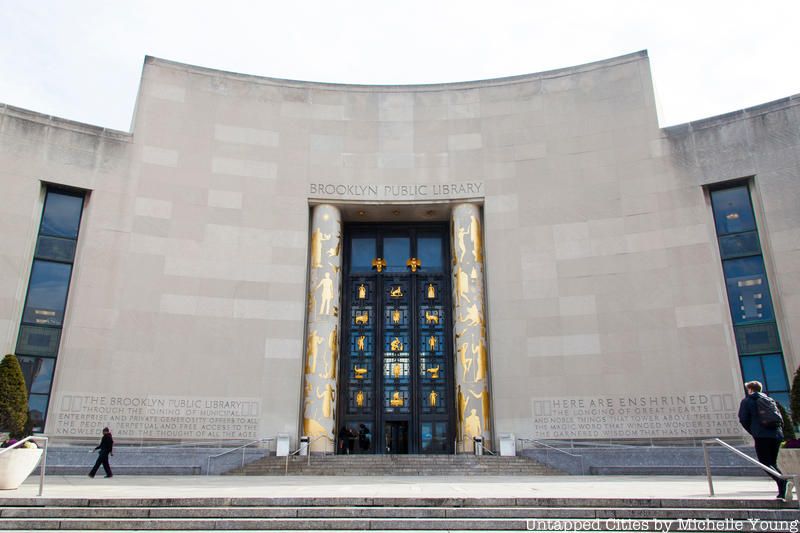
The Brooklyn Public Library, now referred to as the Bklyn Public Library, was founded in 1896. The Bkyln Public Library is the sixth largest public library system in the entire United States. Although construction began in 1912, it ceased up until 1935 due to financial difficulties caused by World War I and the Great Depression. Construction resumed thanks to a $16 million dollar donation from industrialist Andrew Carnegie. The Bklyn Public Library, also alluded to as the “Central Library,” officially opened to the public in 1941.
A unique feature of this location is that it provides a passport office and an idNYC registration site. In 2014, the Bklyn Public Library was recognized as third in the nation among other public libraries for its library programs and attendance by the American Library Association. If you have some spare time, head to the Bklyn Public Library to participate in some of these programs such as educational discussions, meditation classes, and film screenings.
And, look up and behind you when you enter: the eagle from the original Daily Eagle offices perches above you.

Photo courtesy of The Morgan Library & Museum


The Morgan Library & Museum was built between 1902-1906, next to J.P. Morgan’s New York residence at Madison Avenue and 36th Street. The building was referred to as “Mr. Morgan’s Library” as it was primarily his private study up until 1924, when J.P. Morgan Jr. gave the magnificent library to the public. The library expanded with the addition of the Annex building that replaced J. Pierpont Morgan’s residence by means of a gallery, a garden. The most drastic change to the Morgan Library campus was an Italian-inspired piazza by architect Renzo Piano which was added in 2006. Piano’s design of the recent addition expanded exhibition space by over 50%, connecting the Morgan’s three buildings with steel and glass pavilions.
Current exhibitions at the Morgan include, “Tolkien: Maker of Middle-earth” and “The Extended Moment: Photographs from the National Gallery of Canada” up until mid-May. Entrance to explore into J.P. Morgan’s personal library and its intricate ceiling are ongoing. The museum is free on Friday nights, and includes a café, shop, and dining room.
Next, check out 10 Historic Branches of the New York Public Library and Their Unique Collections in NYC
Subscribe to our newsletter